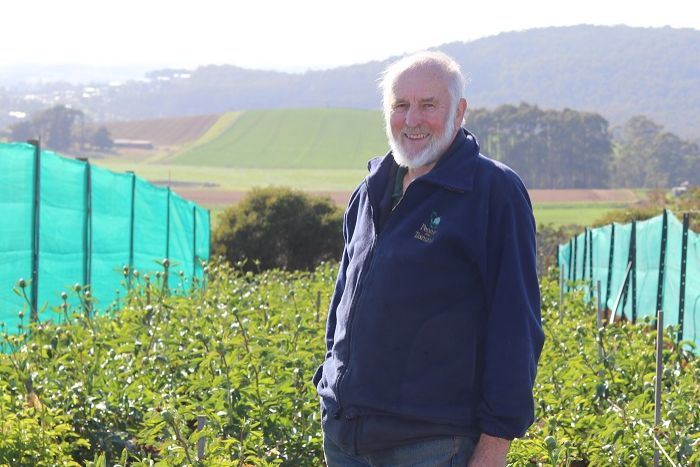Peter Botting at his peony farm in Forth, Tasmania. As the flower world enters the short but vibrant blooming period of the peony flower, a Tasmanian grower’s 30-year venture is coming to a close. Over 30 years Peter Botting has grown to be one of the largest peony producers in Tasmania and at nearly 80, he is hanging up his secateurs. Peonies originate in Asia, Europe and North America, thrive in cold Tasmanian conditions and blooms need to be picked twice a day during harvest. Migrants to Tasmania and new to flower growing, Mark and Tanya Beech have bought the peony business. Peter Botting from Forth, northern Tasmania started growing peonies in 1987, as he wanted a perennial plant that did not need to be replaced often. He has since built up one of the largest peony farms in Tasmania, home to over 100,000 plants and produces hundreds of thousands of flowers every year. A pink peony at Peonietta in Tasmania’s north-west. “I didn’t even know what a peony was!” Mr Botting said. Time to pack it in “All in all it’s a very pleasant past-time… You’re flat out for two or three months and the rest of the year you just dodge along,” Mr Botting said. After 27 years of hard work, Mr Botting has decided to sell the farm citing age, but said he could not have picked a better career. Peonies are native to Asia, Europe and North America and the flowers are highly regarded for their considerable size, colour range and scent. As the official emblem of China, the peony translates to “most beautiful” and has strong ties to royalty and honour in Eastern culture. The flowers needs cold winters and have thrived in Tasmania, although a scientist in Queensland has successfully grown them in the sub-tropics. The fast-blooming flowers need to be picked twice a day in the peak of the season and a missed bulb might be worthless by the afternoon. The flowers can sell for $3 dollars a stem but large producers in Victoria can bring down the price at certain times […]






